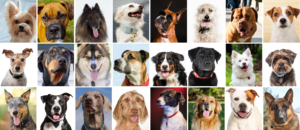National Canine Research Council Summary and Analysis:
The purpose of this paper was to explain the shortcomings of visual breed identification and persuade veterinarians and shelter staff to refrain from guessing a dog’s breed based on its appearance. It does not present original research, but rather is a policy paper based on a compilation of research. The authors acknowledge that breed identification has traditionally been used by veterinarians interested in disease predisposition among purebred dogs, but that breeding patterns have changed and mixed- breed dogs have become more prevalent. Simpson et al. explain that early breeding strategies focused on increasing and improving particular behaviors (e.g., hunting and herding) versus a more recent focus on dogs’ appearances. “Thus, breed identification gives limited insight into the behavioral characteristics of individual animals, and behavioral characteristics can differ considerably within a breed.”
The authors argue that not only is breed no longer useful information, but visual breed identification is inaccurate. Based on the recent research that shows inconsistency in visual breed identification (Voith et al., 2009), Simpson et al. (2012) call for a paradigm shift in identifying and classifying dogs based on looks and breed. They suggest that veterinarians refrain from guessing a dog’s breed by visual inspection. Instead, Simpson et al. (2012) promote using one term (for example, “mixed-breed dog”) to describe dogs of unknown parentage, meaning one or both parents lack pedigree documentation.
They note that misidentifying a dog’s breed can negatively impact the animal and its owners in a variety of ways. Being mislabeled as a “pit bull” or other highly stereotyped dogs subject to Breed-Specific Legislation can lower a dog’s probability of adoption, increase its likelihood to be euthanized, and render it subject to husbandry restrictions. For owners, the consequences can include higher insurance premiums, inability to rent particular houses and apartments, inability to foster children, and higher registration fees.





